Ban Chiang Pottery: From Prehistoric Civilization to Modern Charm
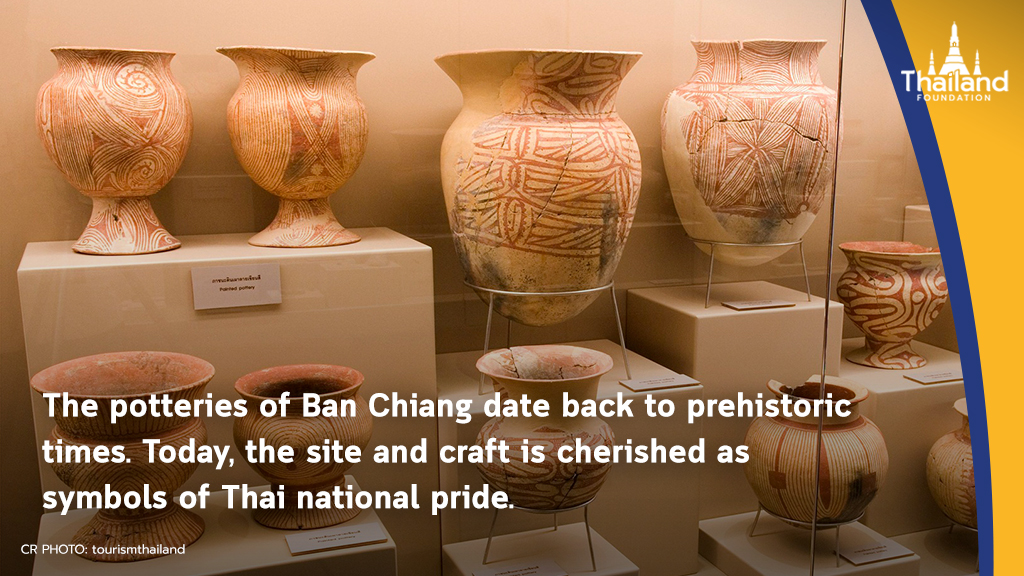
For Thais and ceramic enthusiasts everywhere, the name Ban Chiang (บ้านเชียง)conjures up an image of uniquely painted pottery. The red pattern, which later became known as the “Ban Chiang Rope”, characterizes the clay jars that are around 5,000-7,000 years old, and, perhaps, some of the oldest in the world.
The archeological site of Ban Chiang is considered the most important prehistoric settlement discovered in Southeast Asia. Announced as a world heritage site by UNESCO in 1992, this prehistoric human habitation and burial site marks the beginning of wet rice agriculture, domesticated farm animals, ceramic manufacture, and bronze tool-making technology. It is a place that many people around the world want to visit once in their lives.
The Discovery of the Prehistoric Settlement
This prehistoric settlement is not limited to Ban Chiang District in Udon Thani, a big province in the upper Northeast of Thailand. In fact, Ban Chiang prehistoric culture also encompassed more than 100 archaeological sites in that region.
The discovery of prehistoric tools and artefacts in Ban Chiang started in 1950s when villagers found some broken earthenware with a nice red pattern exposed above ground. They collected the pieces and kept them in a school in their village.
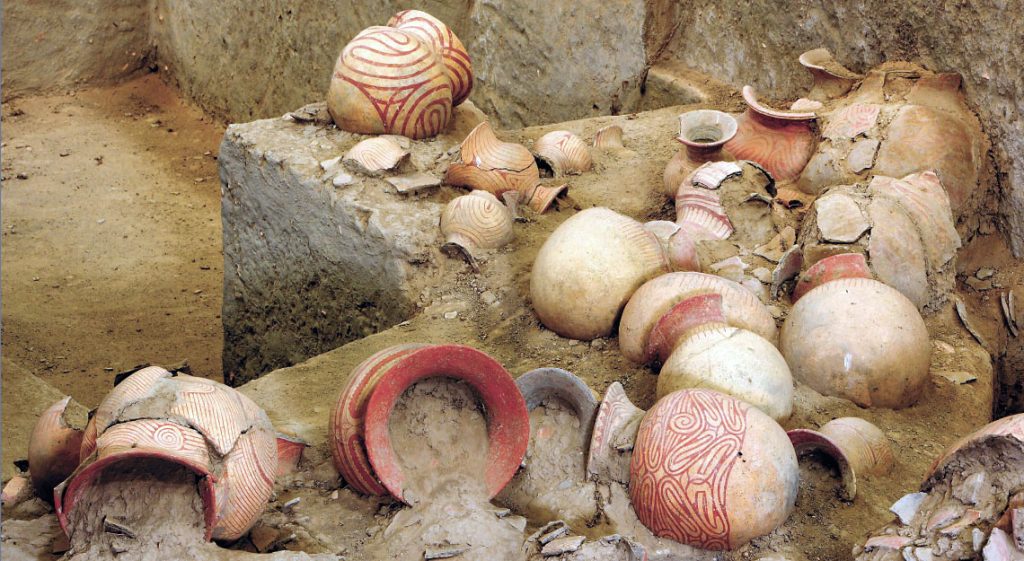
[cr. Isan Gate]
In 1966, Stephen Young, a student from Harvard University who had heard of the villagers’ discovery, travelled to the area. He took some of the broken earthenware to Professor Chin Yoodee, a prehistory specialist at the Fine Arts Department in Bangkok. To their surprise, an analysis showed that those earthenware ceramics were made in the Neolithic Period.
The discovery led to an archeological excavation by the Fine Arts Department in 1967. Some samples of the earthenware pots were sent to Pennsylvania University, USA for testing. The C-14 and Thermo luminescence, a scientific chronometric method used for dating, showed that the earthenware was at least 2,600 years old.
World Heritage Site
Further excavations unveiled more exciting discoveries. There was some evidence of advanced agriculture in those days. Wet-rice farming, animal domestication, and ceramic and metal technology were recorded.
Sadly, between 1973-1992, a lot of earthenware and artefacts were stolen from the site.
With the excavated pieces clearly showing that the settlement was once the center of a remarkable human cultural, social, and technological evolution, Ban Chiang Archeological Site was named a World Heritage Site at the 16th session of the World Heritage Committee held in 1992 in Santa Fe, USA.
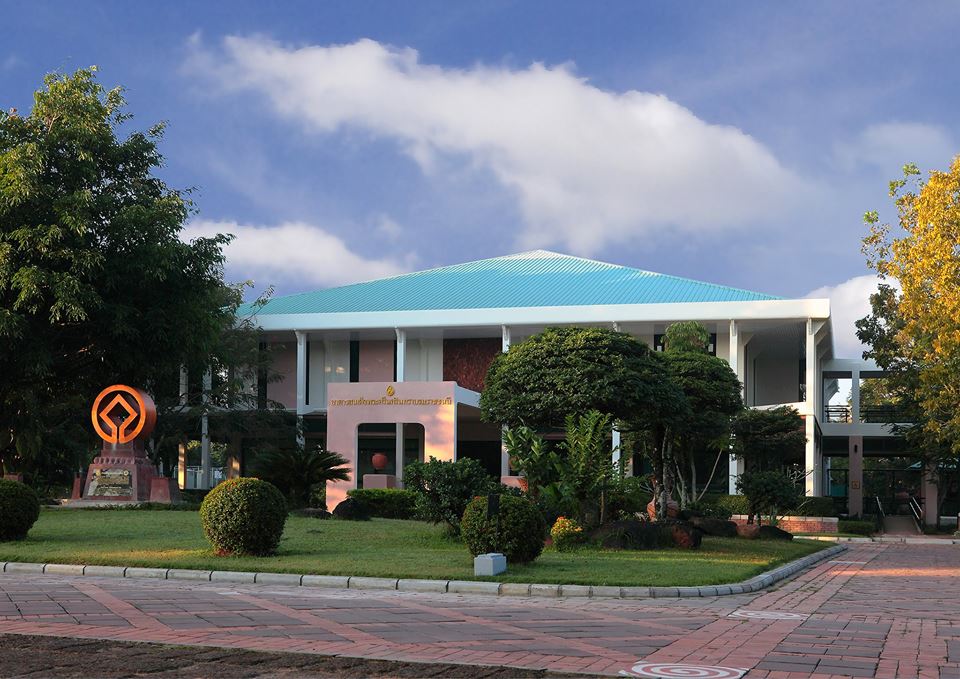
In 1992, Ban Chiang was declared a world heritage site [cr. Thailand Tourism Directory]
Ban Chiang Pottery
Unique to this site, the Ban Chiang clay jars and pots have outstanding forms and patterns. The round-bottom and wide-mouthed jars, those with round flat bottoms and a thick rim at the top, as well as sharp-bottom jars, and tall jars with a wide mouth are unique to this site.
The patterns on these jars are amazing. The red paint pattern on Ban Chiang ceramics looks like someone dipped a rope in red coloring then used it on the pottery to create an attractive design. The red pigment with white geometric and curved designs, flowing lines, spiral patterns, wavy lines, and the S-shape in oval or circle patterns are unique. Various techniques were used to make these patterns, such as scratching, carving, tattooing, plastering, and painting.
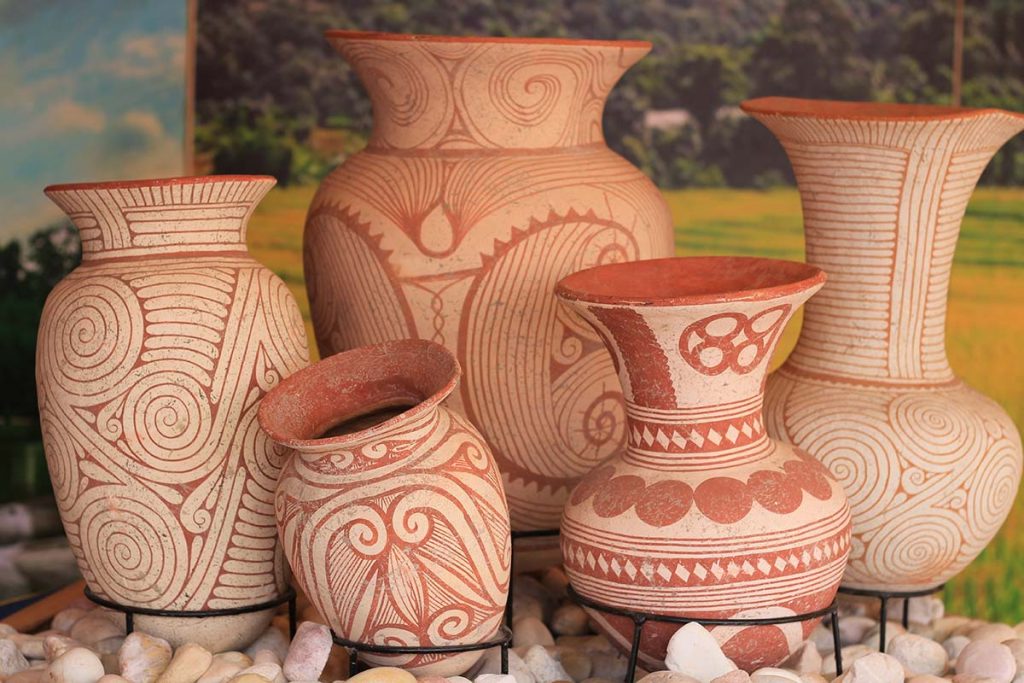
Ban Chiang’s pottery [cr. Thailand Village Academy]
In appreciating the exceptional patterns and designs of the prehistoric pots and jars, residents of today’s Ban Chiang follow these motifs in producing pottery and souvenirs. Ban Kham Or, for example, is a small village where people live on sales of pottery with the unique Ban Chiang designs and patterns. The red and brown paints are made from mixing ground laterite with water, filtering it and using the red liquid to paint the jars. Modern techniques are applied to make the painting on these ceramics more durable.
Ban Chiang Today
People living in Ban Chiang today are not the direct descendants of the prehistoric inhabitants. They are mostly descendants of the Phuan people who fled from war in Xiangkhoung province in Laos about 200 years ago. They crossed the Mekong River and travelled further inland to Ban Chiang, which was then a deserted area surrounded by water. Recognizing that this area would be good for farming, they made it their home. As more people migrated to this area, Ban Chiang grew into a fair-sized town.
The Phuan are well-known for their outstanding artistic skills, especially weaving and knife making. Later, after the archaeological site was discovered in Ban Chiang, these people expanded their artistic skills to include pottery and painting. They make different products and add value by painting them following the famous Ban Chiang designs and painting techniques. They weave sarongs (unisex skirts) in the Ban Chiang rope pattern. All these products make attractive and interesting souvenirs for visitors and are also a good source of income.
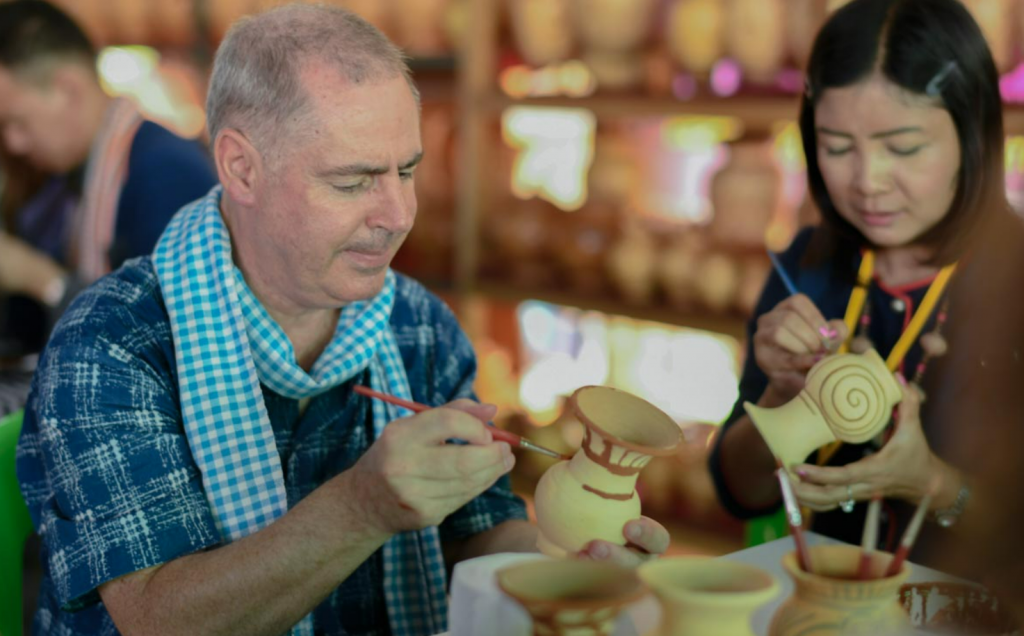 Ban Chiang remains one of the most popular tourist destinations in Thailand
Ban Chiang remains one of the most popular tourist destinations in Thailand
[cr. Thailand Rural Tourism Award]
In addition to the archaeological site, Ban Chiang culture complex offers unique charms to visitors to explore and appreciate. Other new attractions that capture the hearts of visitors include Thai Phuan houses, wooden houses, Thai Phuan costumes, food, Mudmee silk weaving, indigo dyed fabric, local traditions and ceremonies, local food, and traditional dance.
Recognizing the economic potential of Ban Chiang, the government has a policy to make the historic site a significant tourist destination. The government has provided assistance to residents of Ban Chiang to help them develop new landmarks to entertain visitors.
At the same time, they are encouraged to produce more varied and high-quality products. These have become their OTOP, as the locally made products under the One-Tambon-One-Product (OTOP) local entrepreneurship stimulus program is known. The scheme is designed to support the unique locally made and marketed products of each Tambon (district) all over Thailand.
From finding pieces of broken clay jars in the fields to the amazing discovery of one of the world’s most significant civilizations, Ban Chiang, a small village in the Northeast of Thailand, has risen to fame and become a globally known archaeological and World Heritage site. Despite modern lifestyle and rapid changes in technology, the prehistoric heritage remains at the heart of the village and charms all those who visit.
***************************
Reference
Mintra, Busba. Onseon Baan Chiang Choom Chon Tong Teaw Cherng Wattanatham Baan Chiang Laeng Moradok Loke Tarng Wattanatham [The Charms of Baan Chiang: A community based tourism and world’s cultural heritage site]. Watthanatham Journal: Department of Cultural Promotion, vol. 58, no. 2, April-June 2019, p. 64-71. Available at http://magazine.culture.go.th/2019/2/files/downloads/culture2_ebook2019.pdf.


